FOREWORD
We have had a fairly long association with Krishen and have been involved with four publications on his work. We hold this particular one close to our hearts. It has taken us two years to put it together, with eminent art critics from India and England contributing to the project. The twelve large works selected here are the ones which illustrate important subjects that Krishen has revisited many times in the span of his long career. The biblical theme, which is a prominent section of the book, is represented by The Betrayal, Flagellation, The Raising of Lazarus, Last Supper, Pietà and Emmaus. Some of these have been illustrated jointly, even though they are independent works, as Krishen felt that it placed greater emphasis on the continuity of the theme. The portrayal of musicians, exemplified in Serenade for Lajwanti and Remembering Mali, is a subject that Krishen has enjoyed visiting repeatedly. In A Stranger at Gyaniji’s Dhaba and O.K. Tata – the former subtle, almost austere and the latter intensely dramatic – he paints everyday life and everyday people, and, perhaps, not-so-ordinary emotions. Krishen’s paintings themselves are carefully distanced from emotion, but they ask it of the viewer, demand it almost. The Blind King and Blindfolded Queen resonate with layers of meaning and the self-absorbed, enigmatic newspaper readers in Evening News, which reverberates with the death of Mahatma Gandhi, silently stand testimony to the infinite uncertainities of life and, indeed, the inevitability of death.This book is published in conjunction with an exhibition of Krishen Khanna’s paintings to be held at The Royal Academy of London in March, 2007. Retrospectively, in a career that has spanned nearly six decades, Krishen Khanna’s paintings stand eloquent witness to the passage of time in modern India. We hope this selection does justice to his multifaceted narratives, flawless technique and the theatre of human relationships they present.
Tanuj Berry & Saman Malik
November 2006
New Delhi
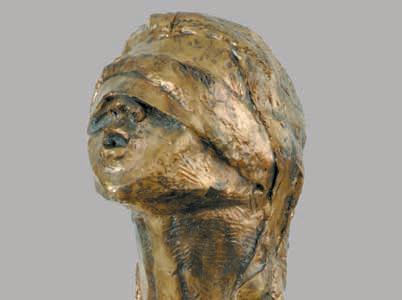
7

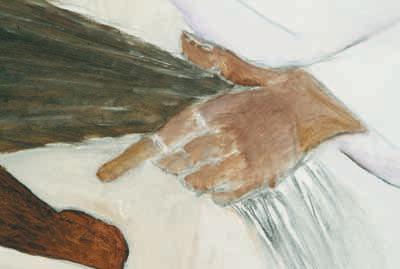
9
•
• Norbert Lynton
The Betrayal The and The Flagellation
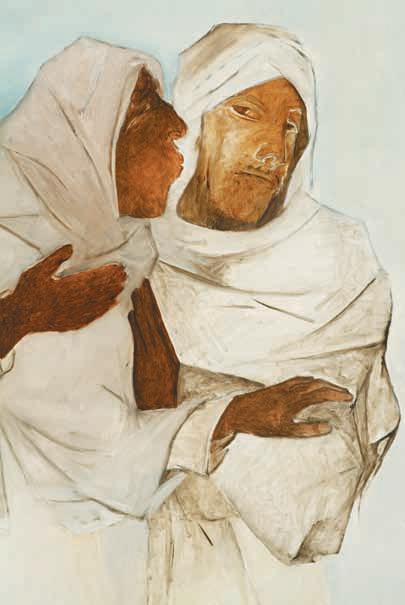
They say love laughs at locksmiths. However true that is, art certainly ignores fences and frontiers, eager to find other modes of expression and other references to adopt and adapt. Kandinsky steeped himself in Russian folk traditions and in news of recent developments in Paris, and chose Munich, halfway between the two, as the place where he might initiate his art, at once radically new and redolent of traditions. Almost all notable modern artists have gone or looked abroad. This applies to the great art of the past as well. The Renaissance itself began with Florence’s eager embrace of the culture of antique Rome, which derived from that of ancient Greece. India’s multifarious artistic history shows many instances
of debts incurred from, and gifts made to, adjacent and more distant cultures, east and west. Art has always tended to be global, even when regionalism and nationalism aimed to rein it in. When he was seven, Krishen Khanna tried to make a copy of Da Vinci’s Last Supper from a reproduction brought home by his father; his first venture into art, we are told. Later he would develop his own versions of the subject, by which time he knew also of other representations of it. His education, first in Lahore and then at the Imperial Services College in Windsor, was basically Christian and English. In India, before and after his years in England, he also studied Urdu and Persian, building up a deep knowledge of, and love for, the
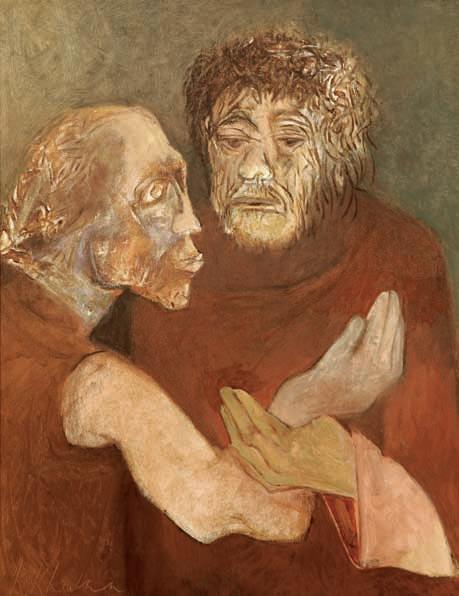
11
The Betrayal, oil on canvas, 22x28”, 2006
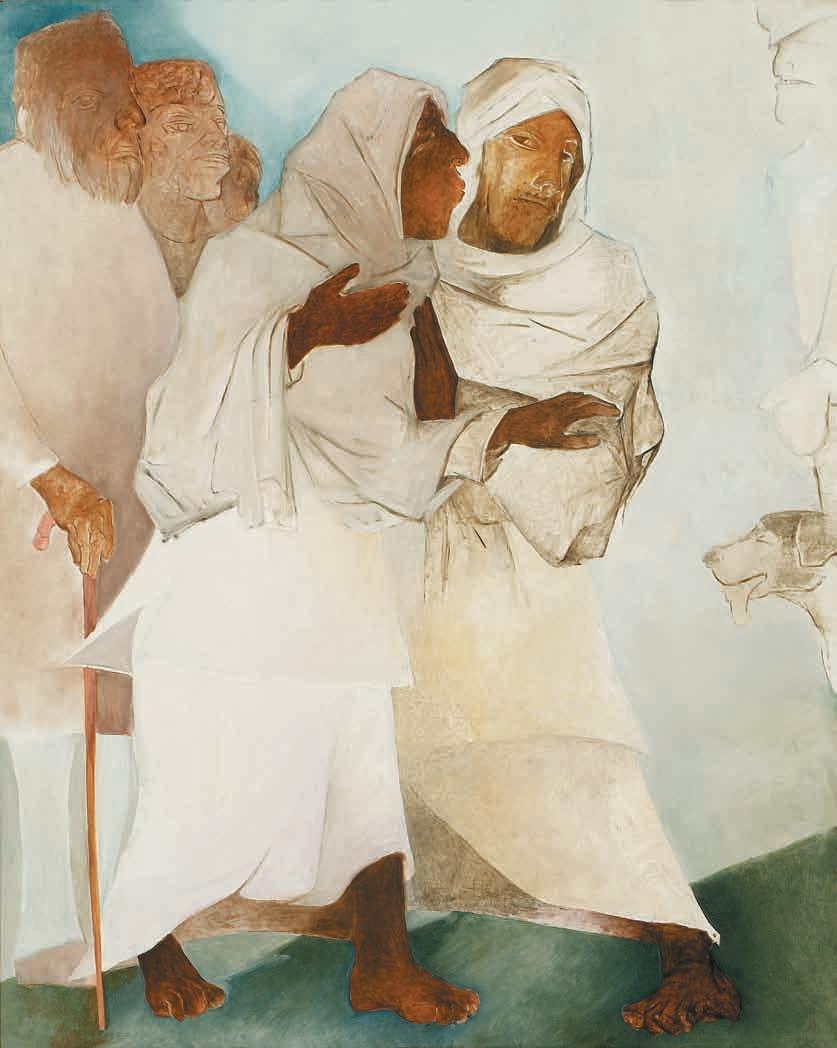 The Betrayal, oil on canvas, 48x60”, 2006
The Betrayal, oil on canvas, 48x60”, 2006
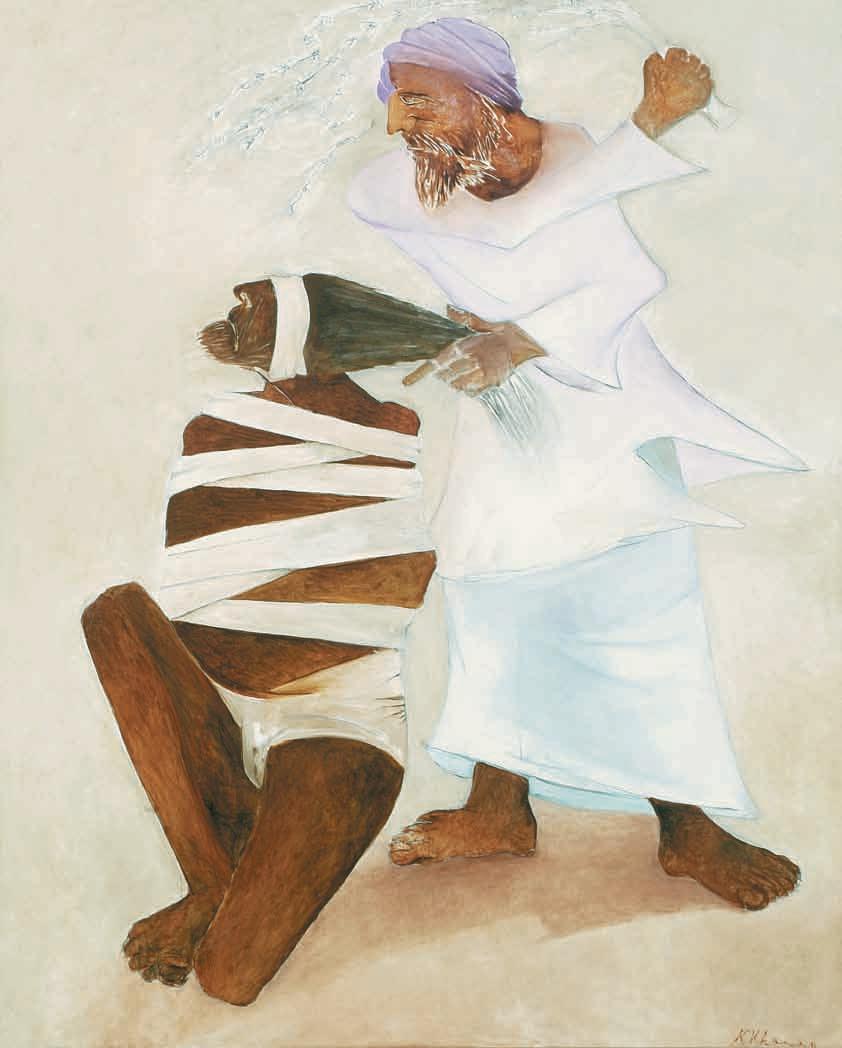
13 Flagellation, oil on canvas, 48x60”, 2006
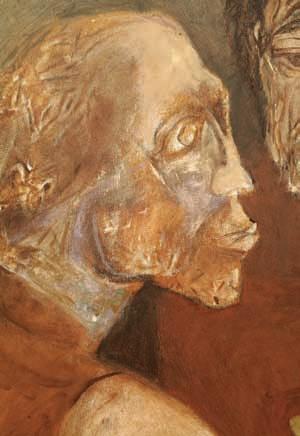
literatures of all three languages as well as the Indian languages he had acquired from childhood in the Punjab and, because of the relocations that India’s Partition and his work imposed, to Mumbai, Madras and – after he opted for full-time painting – New Delhi. In England, during school holidays, he enjoyed the friendship and guidance of Brother Joseph Gardener at Frensham, as one visitor among several other displaced and family-less youngsters. Here his understanding of Christianity took on additional depth, with closer knowledge of the New Testament and of the character of Christian saints such as St Francis, still a favourite. His college took him on repeated visits to the National Gallery in London, where he soon found himself fascinated by Piero della Francesca’s resonantly understated Baptism of Christ, as well as the strong, calm art of Giotto and Uccello, religious and secular, and delivering their messages through strong design and unchallengeable staging. He was back in India in 1942, but spent six months of 1954 in London and Paris and in Central Italy, notably in Rome, Arezzo and Assisi, confirming
and enlarging his grasp on western, often religious, art. He speaks with awe of Piero della Francesca’s frescoes. My emphasis on his Christian education as man and artist must not overshadow his growing grasp on, and involvement in, Indian and Oriental art, culture and mythology. In Bombay, aged only 24 and a part-time painter, he became part of the Progressive Artists Group and thus made lifelong friendships with a number of artists striving to achieve their individual voices as image-makers for a country and a culture riven by Partition and open enmities and, in varying degrees, eager to find in western modernism – itself a rich, contradictory and rapidly developing field – idioms and methods that might leaven their inheritance. In 1964–65 he produced a number of beautiful Sumi-e paintings, abstract and done in black ink on off-white rice paper. The name is Japanese. The paintings celebrate instinctive, as opposed to considered, creation in the spirit of Zen. When he was awarded a US fellowship, he chose to travel via the East. For some time Khanna stayed
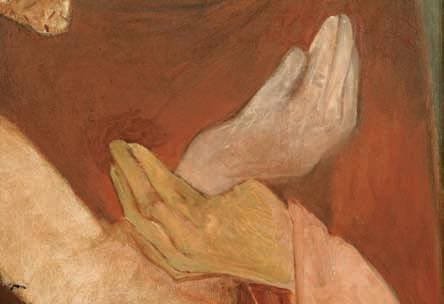
15
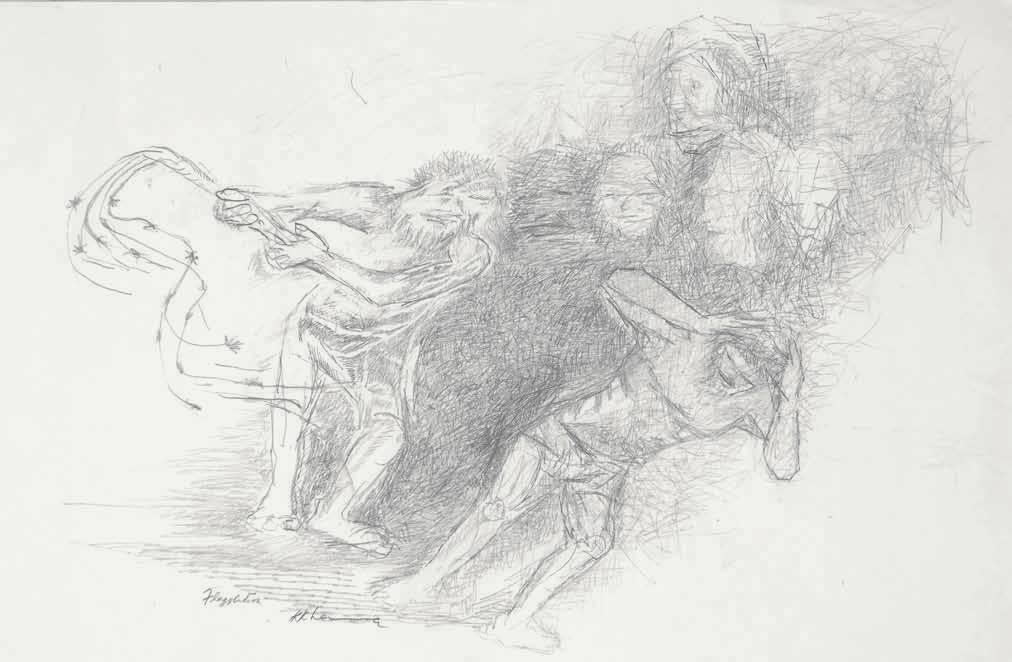 Pencil on paper, 16.5x12”, 2005
Pencil on paper, 16.5x12”, 2005
close to abstraction, partly under European and American influence (he knew and admired Rothko and De Kooning), but his instincts and his need to speak about the world more directly led him back to representational art on a very wide front. When he was asked to make a large mural for the Chola Sheraton Hotel at Chennai, in 1975, he chose as his theme the legendary maritime life of the Chola Empire, trading across the Bay of Bengal and along the Coromandel Coast in the 13th and 14th centuries. His mural is a pencil drawing made on many sheets of paper – black and white and with an infinity of tones – to represent ancient ships and their crews amid mighty seas, and their arrival at tropical shores. The ships he had to invent; the people are people, strong but generalized and not intended to refer to a specific place or epoch. In 1980–84 he worked on a mural to fit the complex vault of the main reception area of the Maurya Sheraton Hotel in New Delhi, a multi-lobed surface divided vertically by many timber beams which leave narrow spaces between them, part wall, part ceiling, for which he planned scenes all of which curved in at least one direction. Letting some scenes seem to continue behind the beams, others to be contained by them, and sometimes providing architectural or natural backgrounds for the
17
activities he was picturing, Khanna’s multitudinous scenes here deal with contemporary life, much of it generalized from observation of the world around him, some of it quite personal – as when he represents colleagues and friends, or himself in a wayside teahouse, averted from other figures as they argue and from the Sikh who owns the place and is seen making more tea. The whole work is entitled The Great Procession. Khanna wanted it to echo Chaucer’s Canterbury Tales with their inclusive presentation of humanity, its aspirations and failings. If a gentle, humorous kind of realism dominates this mural, it also includes scenes that must be satirical, as when an agile figure is shown juggling with three almost-living heads. Khanna was capturing, directly and symbolically, the ordinary life of Delhi together with its epic moments and the grave social disparities on which the rapidly growing city depends.
Khanna’s overtly Christian paintings may appear to be the opposite of all this, historical and mythical as against the contemporary and real. After his childhood venture, his Christian paintings began in 1966 with a Pietà. He has never, I think, painted Christendom’s favoured emblem, Christ crucified. The nearest he comes to picturing the death of Christ is in scenes of his Deposition, of which the Pietà
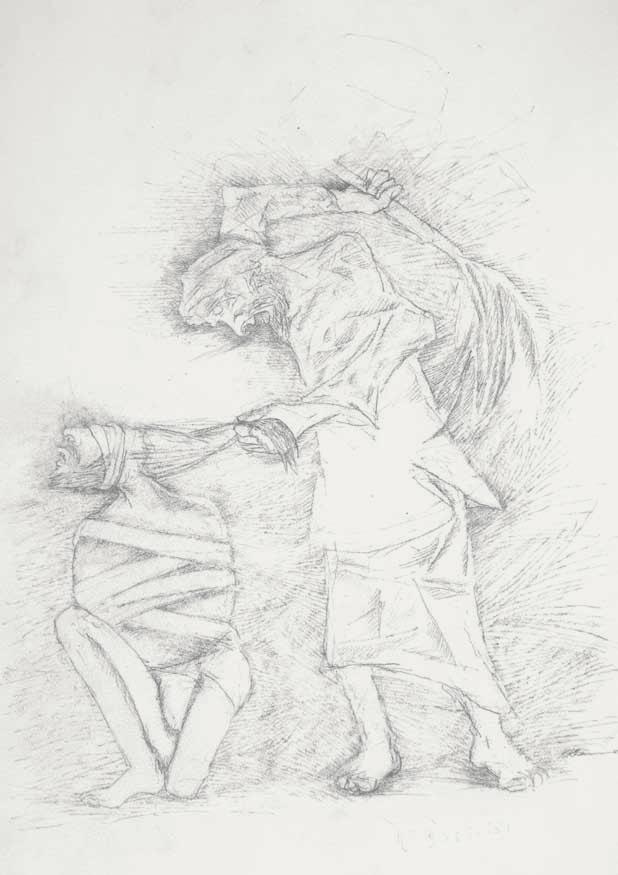
19 Pencil on paper,
14x20”, 2005
is a particularly concentrated and poignant variation. So not the dying god-man but the dead body on the lap of his tormented and protesting mother, and not the victorious Christ of the Resurrection, but the less dramatic scenes from his last days on earth, when he reveals himself to two disciples at Emmaus, and when Thomas asks to touch Christ’s wound to still his doubt. No scenes of Christ falling under the cross as he struggles to carry it to Gethsemane, but repeated versions of the Last Supper and of the Betrayals that brought Christ to that extremity. The closest Khanna comes to showing us the suffering Christ is in Flagellation, a five by four foot canvas, wholly occupied by the two figures involved, with even the scourge played down lest it detract from the essential drama of those two, the executioner and his victim. They are presented starkly, in an almost monochrome composition, the assailant clad in white and standing over a brown-skinned Christ, blindfolded, crouching and bound tightly with white bands so that the brown of his body and the zig-zagging bands are the painting’s main visual

motif, together with that central hand pulling so viciously at Christ’s hair. Khanna has witnessed or known of, over the decades, many fellow humans suffering at the hands of officials acting on the orders of superior powers.
Flagellation stands for all such acts of violence, often for political reasons but supposedly in the name of law and order. Betrayals are often part of such stories, and in another canvas of the same years, also five by four feet, we see Judas betraying Christ with a kiss. This is another very succinct image, with the two protagonists supported by only two indistinct figures indicated on the left and the snout of a dog on the right. Judas’s hands gesture and reach out to Christ as his lips press forward; with his left hand (we do not see his right) Christ gently, almost apologetically wards off Judas’s lying approach, while his left foot stands forward to strengthen that patient gesture. Each of these powerful paintings delivers an emblem, succinctly scored and choreographed. The main figures, large on the canvas, feel
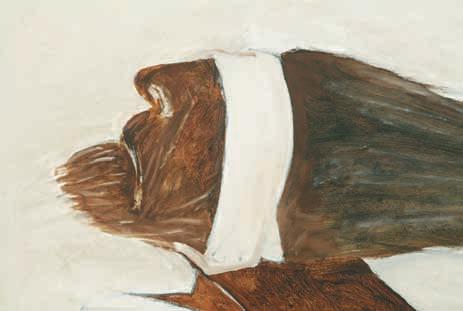
21
barely contained by the rectangular supports. Once seen, they are not easily forgotten: they burn their way into our store of significant images. The lack of ameliorating colours and expressive brushwork, the lack of all sweetening or distraction from the key performance, gives this art an incisive and enduring character that goes far beyond the photo-based representations that are often promoted as contemporary art with a social purpose. Technically, these are narrative scenes, qualifying, in view of the importance and the familiarity of their subjects, for the art historical term ‘history painting’. Through centuries from the Renaissance on, history painting attracted ambitious artists and held the attention of their informed public, while portraits and genre scenes, of daily life as lived by anonymous contemporaries, were accorded much less attention and an inferior status. At different times and in different places history paintings could be overloaded with narrative or sensuously attractive detail, or honed down to essentials in order to produce a noble – not an entertaining – image. In concentrating his narrative so firmly, Khanna also de-particularizes it. Consider, for contrast, Giotto’s crowded and dramatic fresco of the Kiss of Judas in Padua or Piero’s panel of the Flagellation in
Urbino, where the eponymous action is set silently into the middle distance, while mysterious figures stand in the foreground of that brilliantly worked architectural space. Shunning all supporting action and staging, Khanna turns these narrative events into timeless, location-less emblems that reflect on our own time and condemn all inhumanity.
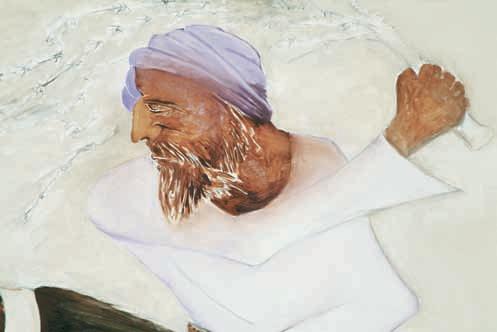
23
• Gayatri
Sinha
• Serenading
Lajwanti
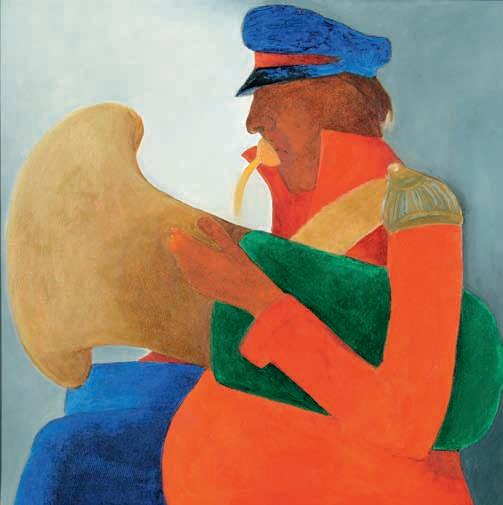
25 Oil on canvas, 32x32”, 2005
 Serenade for Lajwanti, oil on canvas, 52x72”, 2005
Serenade for Lajwanti, oil on canvas, 52x72”, 2005
‘Ours is the modernity of the once colonized. The same historical process that has taught us the value of modernity has also made us the victims of modernity. Our attitude to modernity therefore cannot but be deeply ambiguous.’1
As with the other genre paintings in Krishen Khanna’s oeuvre, the genesis of the Bandwallah paintings is rooted in personal experience. While driving out of the Garhi Studios one day, in the early 1970s his car was held up by a passing band. Against the background of the 18th-century Garhi fort with its large, capacious artist studios, the raucous band crammed into the small mean street of Garhi village. The syncopated tunes intended for the jollification of a baraat (wedding party), the quotient of assertive maleness and vigour of the accompanying groom’s party, the residual image of the British colonial march past, and sanguine military energy collapsed into a singular image on that warm Delhi afternoon. Positioning himself as sympathetic spectator and a somewhat humorous narrator, Krishen Khanna has steadily painted the bandwallah; the heroics of the street have been rendered with a deep humanist sympathy. Krishen Khanna’s engagement with music and musicians as a subject has been a steady preoccupation. In the 1950s, his home in Madras was
27

a site for Carnatic musical performances with masters like Palghat Mani Iyer, mridangam player, and the flautist Mahalingam. During these concerts he often painted, petrifying the taut rhythms of the music within abstract forms. In contrast to the sedate classicism of the Carnatic maestros, the bandwallahs present the restless energy of the Delhi street, its aspirations and class hierarchies. In their hired uniforms, they resemble the men in trucks; because of their ceaseless movement they become emblematic of the volatility of the city. The figures on the margin
Krishen Khanna’s early paintings of the bandwallahs date to early 1970s, a period when he had been particularly preoccupied with war and victimization. India in the late 1960s was recovering from wars with China and Pakistan, near famine conditions, and the devaluation of the rupee. In the aftermath of the Bangladesh war (1971) he had painted The Game I and II where he portrays military men at a table, discussing the stratagems of war. In Game II, skeletal and bodily remains of human corpses lie forgotten under
the table, as the discussions continue. This macabre subject would have been inspired at least in part by the Bangladesh atrocities and the widely disseminated images in Indian newspapers of generals brokering peace across the table. These paintings bear reference as the soldiers elide into the bandwallahs, and the military style uniforms are now rendered faux or even comic. ‘The comparison of the bandwallahs with warlords is in fact ironic and overt; both these sets of gentlemen wear uniforms and peaked caps, but while one set ordains the destiny of nations and sets armies marching to war, the other marches to tawdry tunes on India’s roads in cheap imitation of the army band.’2 The shift in context from the malevolence of war to the small tunes of the roadside band touches on different registers of social comment. Within the political matrix of the 1970s, the issues of class authority were foregrounded with the setting up of the Jaiprakash Narayan–led Janata, or people’s party. As an ar tist, Krishen’s own response to the marginal figure was already manifest in his paintings of refugees in the 1950s. His paintings of

29
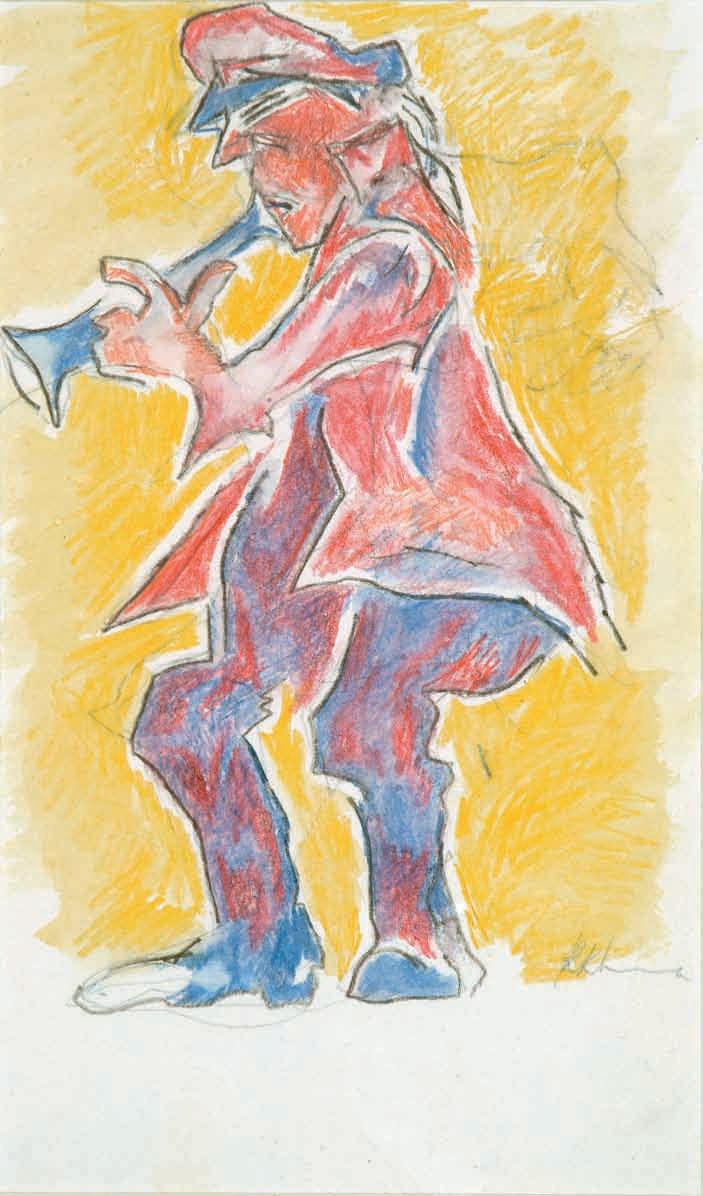
bandwallahs build up a broad narrative around these figures, one that draws from mixed social references. Scenes of the jollification, such as in Marriage Procession (1993) underscore the temporary passing pleasure of a hired performance. The pulsations of the street, the rhythm of the marching band are envisioned on the body of the bandwallah. On the streets of Delhi, like an off-register palimpsest in his ill fitting uniform, the bandwallah recalls the British colonial band. Instead of the military march past, the national anthem or the funerary dirge, his heavy brass instruments now used to belt out slightly off key Bollywood tunes. The band – impaled in the light of the street – usually accompanies the groom’s party that dances en route to the site of the wedding. The sights of heaving bodies, arclights and shuffling bands have become common at middleclass Nor th Indian weddings. The cultural pastiche of a colonial residue, popular Bollywood and the Hindu ceremonial procession have come together as part of a popular, if ungainly, even comical ceremony, enacted in full view of the gaze of the casual onlooker. The street
By the early 1970s Khanna had emerged as a significant painter of Indian street figures, treating the subjects within the genre as
31
Mixed media on paper, 6x9”, 2005
ISBN: 978-0-85331-964-1 (Lund Humphries)
ISBN: 978-81-88204-95-3 (Mapin)
ISBN: 978-0-944142-51-6 (Grantha)
First published in 2007 in India by Mapin Publishing Pvt. Ltd. 10B Vidyanagar Society Part I Usmanpura, Ahmedabad 380 014 INDIA T: 91 79 2754 5390/2754 5391 • F: 91 79 2754 5392 E: mapin@mapinpub.com • www.mapinpub.com Also published in 2007 by Lund Humphries Gower House, Croft Road, Aldershot, Hampshire GU11 3HR United Kingdom and Lund Humphries Suite 420, 101 Cherry Street, Burlington VT 05401-4405 USA Lund Humphries is part of Ashgate Publishing www.lundhumphries.com By arrangement with Grantha Corporation, USA E: mapinpub@aol.com Distributed in the Indian subcontinent by Mapin Publishing Pvt. Ltd. Distributed in the rest of the world by Lund Humphries Text © Tanuj Berry Illustrations © Krishen Khanna All rights reserved. No part of this publication may be reproduced, stored in a retrieval system or transmitted in any form or by any means, electrical, mechanical or otherwise, without first seeking the permission of the copyright owners and the publishers.
British Library Cataloguing-in-Publication Data A catalogue record for this book is available from the British Library Library of Congress Control Number: 2006940422 Designed by Amit Kharsani / Mapin Design Studio Edited by Diana Romany / Mapin Editorial Processed by Reproscan Printed in Singapore
MODERN & CONTEMPORARY ART
Krishen Khanna
Images in My Time
Gayatri Sinha
120 pages, 63 colour illustrations
8.75 x 11.75” (222 x 298 mm), hc
ISBN: 978-81-88204-62-5 (Mapin)
ISBN: 978-1-890206-90-1 (Grantha)
₹2000 | $45 | £29
2007 • World rights
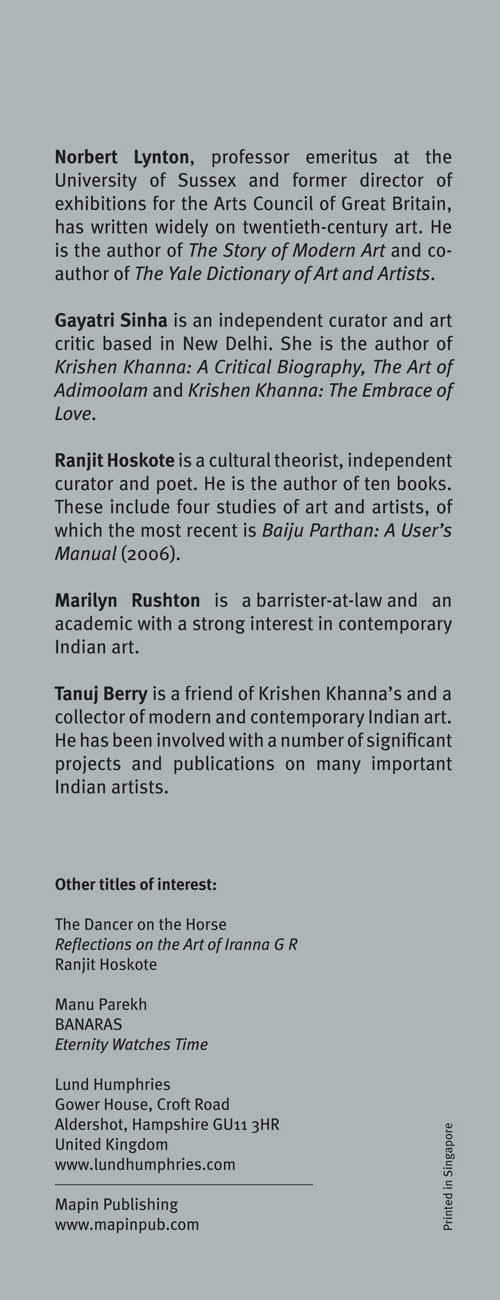
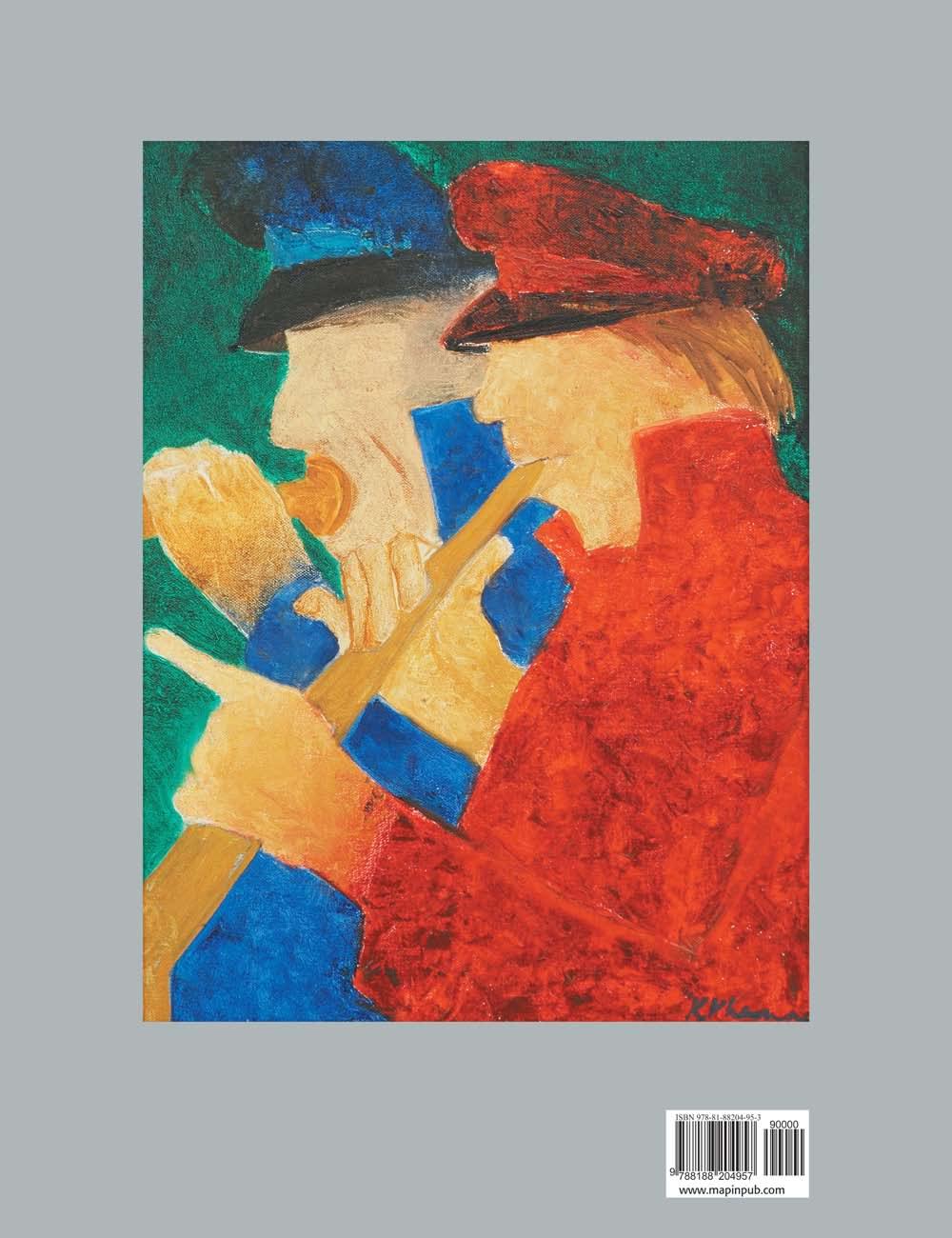
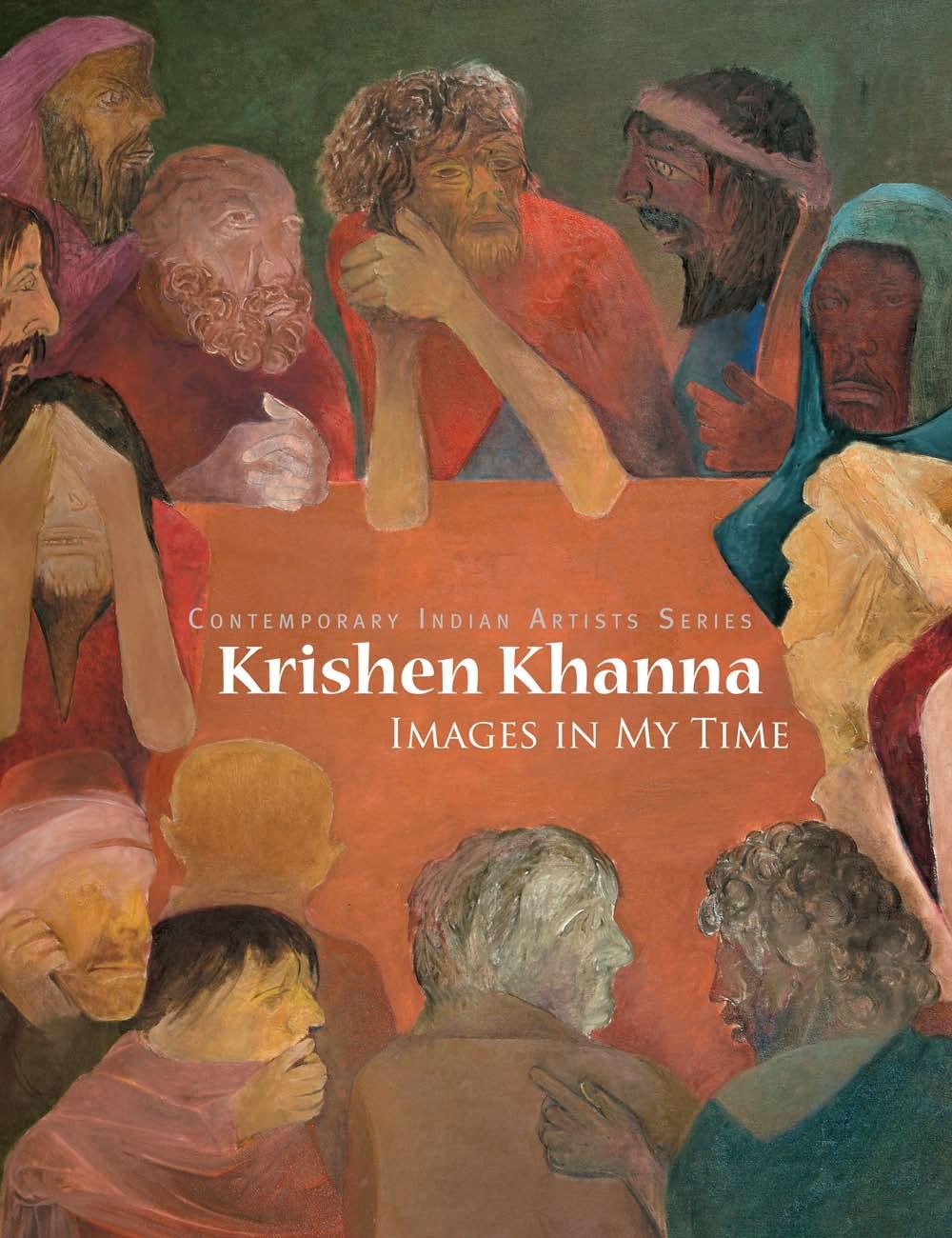
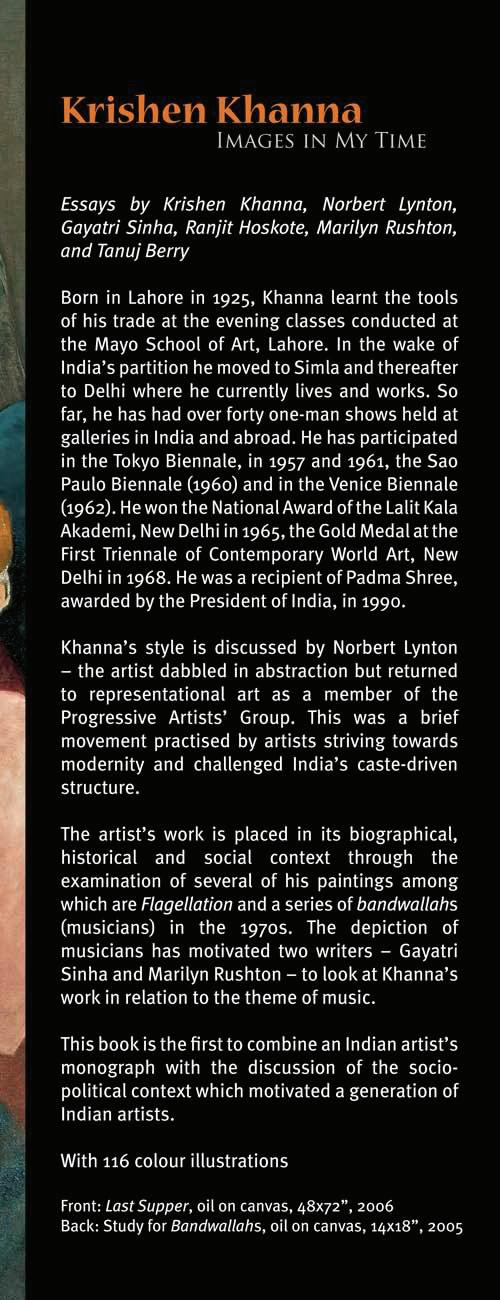
 Krishen Khanna • Norbert Lynton • Gayatri Sinha •
Krishen Khanna • Norbert Lynton • Gayatri Sinha •


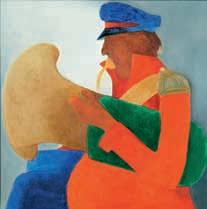
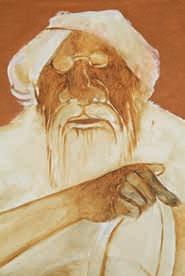

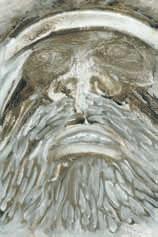


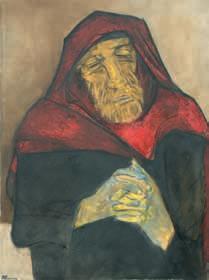
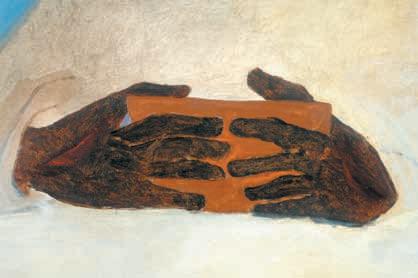







 The Betrayal, oil on canvas, 48x60”, 2006
The Betrayal, oil on canvas, 48x60”, 2006



 Pencil on paper, 16.5x12”, 2005
Pencil on paper, 16.5x12”, 2005





 Serenade for Lajwanti, oil on canvas, 52x72”, 2005
Serenade for Lajwanti, oil on canvas, 52x72”, 2005







